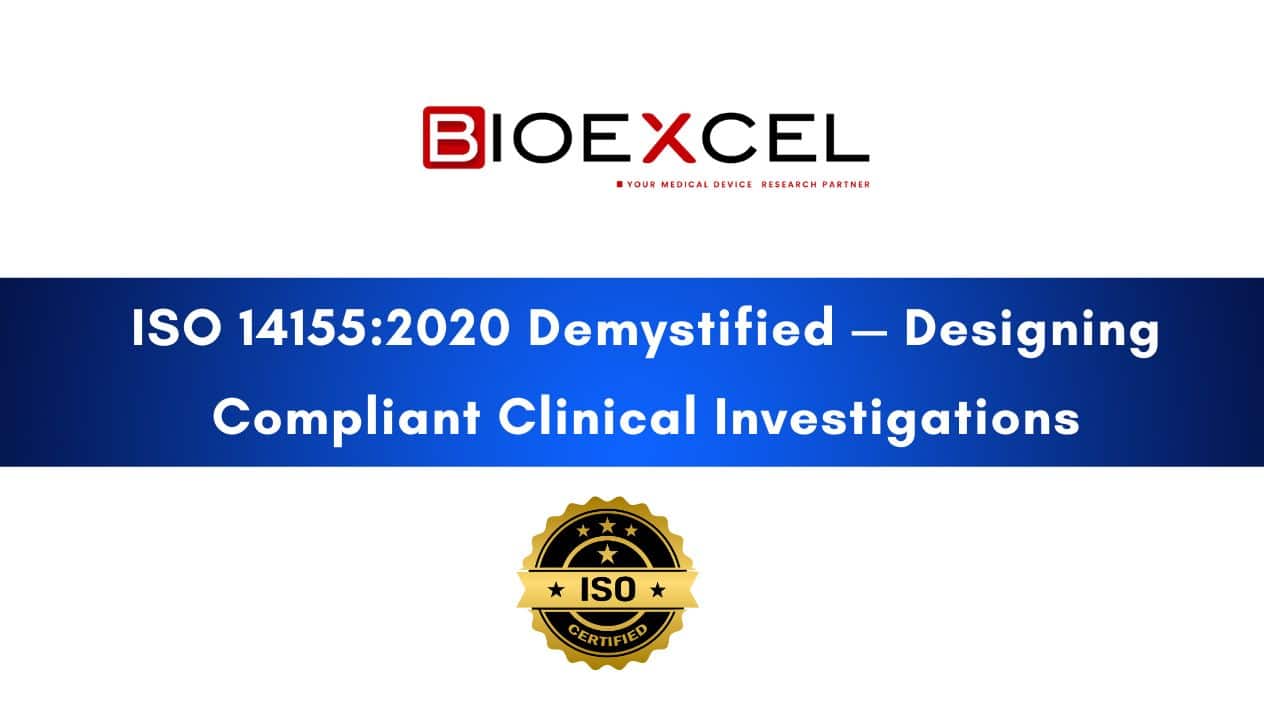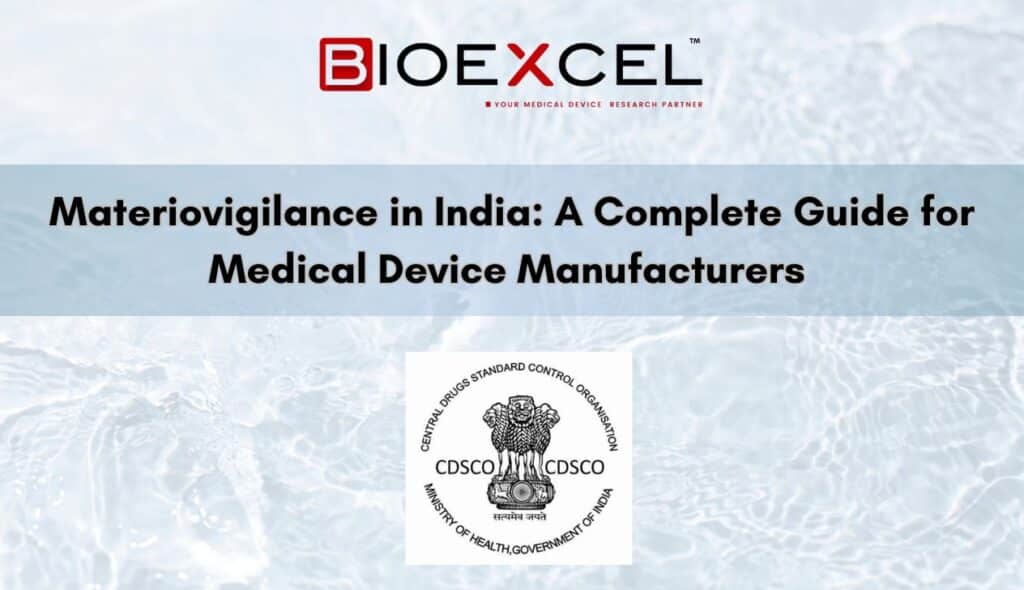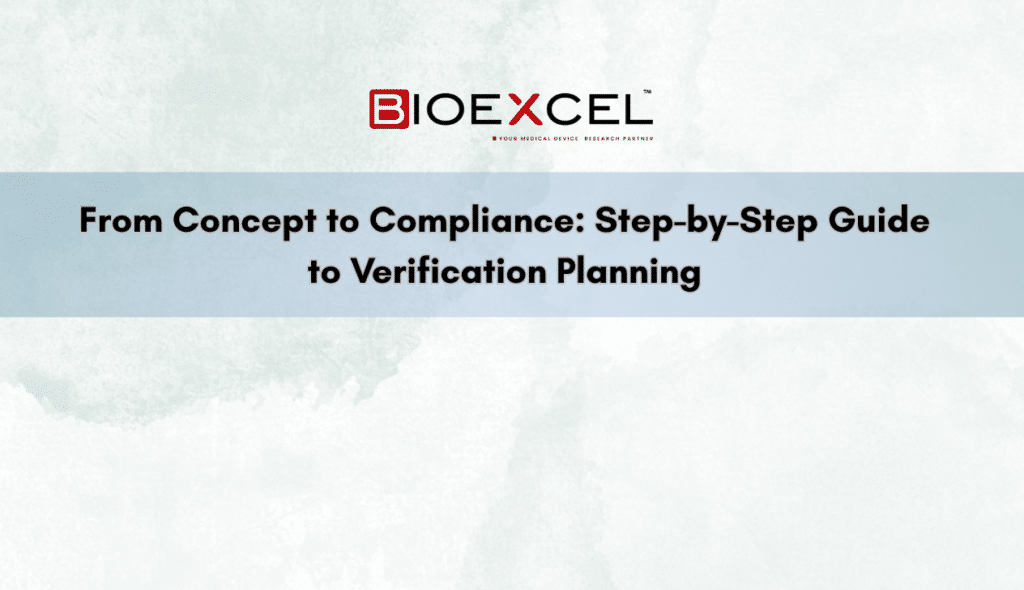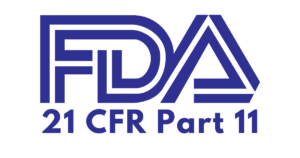Introduction
Within the field of medical device trials, ISO 14155:2020 serves as the definitive guideline for Good Clinical Practice (GCP). This international standard, titled “Clinical investigation of medical devices for human subjects – GCP”, demystifies what it takes to design and conduct device trials that meet ethical and scientific quality benchmarks.
For sponsors and Clinical Research Organisations (CROs) alike, understanding ISO 14155 is critical: many regulatory authorities and ethics committees now expect compliance with this standard for device studies. Adhering to ISO 14155:2020 ensures that a clinical investigation is not only globally credible but also aligned with the latest regulatory requirements (e.g., EU MDR 2017/745 and FDA’s IDE regulations). In this post, we break down ISO 14155:2020 and how to design a compliant clinical investigation under its guidance.
ISO 14155 in a Nutshell: Good Clinical Practice for Devices

ISO 14155:2020 provides a comprehensive GCP framework specifically tailored to medical device investigations. Similar to ICH GCP for drug trials, it covers the entire trial lifecycle from planning and conducting the study to recording and reporting results. The standard aligns with fundamental principles like the Declaration of Helsinki and emphasises protecting trial subjects’ rights, safety, and well-being at every step. Notably, ISO 14155 is recognised internationally; for instance, the FDA will accept foreign clinical data in support of a device approval if the study was conducted according to ISO 14155 GCP guidelines. In the EU, compliance with ISO 14155 is essentially required for high-risk devices under MDR and is a key part of demonstrating GCP in your trial design.
Key GCP principles enforced by ISO 14155 include obtaining voluntary informed consent, independent Ethics Committee approval of the protocol, and a favourable risk-to-benefit assessment before enrolling patients.
The sponsor must ensure that the investigation adheres to these ethical requirements and that patient welfare is paramount throughout the study. In practical terms, “compliant” clinical investigation design means no steps are skipped when it comes to ethics and safety: you need a solid protocol, ethics clearance, and robust consent processes as foundational elements.
Designing a Compliant Clinical Investigation Plan (CIP)

One of the core components of ISO 14155 is meticulous planning. The standard outlines what must go into a Clinical Investigation Plan (CIP) – effectively the trial protocol. A compliant CIP should clearly define the investigation’s objectives, design, methodology, and statistical considerations, as well as demonstrate how risks will be managed. Key documents and plans to prepare during the design phase include:
- Clinical Investigation Plan (Protocol): detailing the rationale, endpoints, study population, inclusion/exclusion criteria, procedures, monitoring plan, and statistical analysis plan for the trial. ISO 14155 expects sponsors to justify the study design and link endpoints to the investigational device’s intended purpose.
- Investigator’s Brochure (IB): summarising all relevant preclinical and clinical data about the device to date, to inform investigators and support the need for the study.
- Case Report Forms (CRFs): standardised forms or electronic data capture setups to systematically record each subject’s data during the trial.
- Risk Management Plan: an outline of known and anticipated risks, with strategies to mitigate them during the study (e.g., safety monitoring, stopping rules), drawing from the device’s risk analysis per ISO 14971.
- Safety Monitoring and Data Management Plans: procedures for how adverse events will be reported and handled, emergency care arrangements, data handling and record-keeping procedures, etc., to ensure subject safety and data integrity at all times.
ISO 14155:2020 places a strong emphasis on risk management throughout the investigation. Annex H of the standard explicitly ties in ISO 14971 (the medical device risk management standard) and requires applying risk management principles across the planning and conduct of the trial. This means when designing your study, you must consider things like: are the investigational device’s risks well understood, and is the trial designed to minimise them? Have you set up proper surveillance for adverse events? The 2020 update to ISO 14155 made this a focal point, as earlier versions were less explicit about integrating risk management beyond the device risks themselves.
Another updated requirement is trial registration: ISO 14155:2020 mandates that device trials be registered in a publicly accessible database (such as ClinicalTrials.gov or Eudamed) before starting. This transparency measure aligns with global ethical norms and regulatory expectations, and it should be factored into the planning timeline for any new study.
Quality by Design, Monitoring, and Responsibilities
Designing a compliant study isn’t only about documents—it’s also about implementing quality by design and clear responsibilities. ISO 14155 calls for a quality management approach to the clinical investigation (Clause 9.1), meaning sponsors should have systems to ensure the trial is conducted in accordance with the CIP, the standard, and applicable regulations. In practice, this involves training the study team on GCP, using standard operating procedures (SOPs) for trial activities, and possibly conducting audits (as guided by Annex J) to verify compliance during the study.
A significant enhancement in ISO 14155:2020 is the promotion of risk-based monitoring. Instead of relying solely on frequent on-site source data verification for every data point, the standard encourages tailoring the monitoring strategy based on the trial’s risk assessment.
For example, a complex pivotal trial on an implantable Class III device may warrant intensive monitoring of critical endpoints and safety data, whereas a simpler observational device study might use a leaner approach. When designing your monitoring plan, ISO 14155 suggests considering factors like study complexity, critical data and endpoints, and deviations from standard care to determine the appropriate level of monitoring. Embracing risk-based monitoring can improve efficiency while maintaining data quality and participant safety – a win-win for compliance and practicality.
Roles and responsibilities are clearly delineated under ISO 14155. Sponsors (often the device manufacturer or trial sponsor company) retain ultimate responsibility for the study, even if tasks are outsourced to a CRO. The sponsor must ensure investigators are qualified and trial sites are prepared to comply with GCP.
This includes providing training and the necessary resources. Investigators, on the other hand, are responsible for conducting the trial according to the CIP, protecting subjects, and diligently collecting data. ISO 14155’s Clauses 8 and 9 detail these obligations. When designing a trial, sponsors should incorporate these role-based requirements – for instance, by selecting experienced investigators, establishing clear communication lines, and setting up oversight committees if needed.
Conclusion
ISO 14155:2020 may appear complex, but “demystifying” it reveals a straightforward truth: it is about conducting device trials with the same rigour and ethics expected of any clinical research. By adhering to ISO 14155, sponsors demonstrate that their clinical investigation is designed to protect patients and produce reliable, high-quality data. From robust planning (CIP, risk management, and registration) to execution (quality control, monitoring, and oversight), each element of the standard maps to a safer and more effective trial.
Designing a compliant clinical investigation under ISO 14155 is not just a regulatory checkbox—it’s a smart strategy to minimise pitfalls. Studies that follow this GCP standard are more likely to withstand scrutiny by regulators and Notified Bodies, and their data can be used globally, streamlining the path to market. For medical device companies, partnering with a CRO that deeply understands ISO 14155 can be invaluable.
Bioexcel’s team, for example, integrates ISO 14155 principles into every study we manage, ensuring that trial protocols, monitoring, and reporting all meet the highest quality standards. In essence, ISO 14155:2020 provides the blueprint for clinical investigations done right. Armed with this standard and the right expertise, sponsors can design trials that not only comply with regulations but also uphold the trust of patients and clinicians, paving the way for successful device development and approval.












